Zebra loach - Botia striata
Scientific name: Botia striata
Common name: Zebra loach
Family: Cobitidae
Usual size in fish tanks: 8 - 10 cm (3.15 - 3.94 inch)
014
Recommended pH range: 6.5 - 7.5
Recommended water hardness: 4 - 12°N (71.43 - 214.29ppm)
0°C 32°F30°C 86°F
Recommended temperature range: 23 - 27 °C (73.4 - 80.6°F)
The way how these fish reproduce: Spawning
Where the species comes from: South Asia
Temperament to its own species: peaceful
Temperament toward other fish species: peaceful
Usual place in the tank: Bottom levels
Short description
The Zebra loach (Botia striata) is a small, peaceful loach from southern India, recognized by its narrow vertical stripes and active group behavior. Unlike larger Botia species, it remains under 10 cm and is therefore suitable for medium community aquaria. It is a gregarious bottom dweller that should be kept in groups of at least 5–6. In a healthy shoal, they display lively social interactions and are less shy.
Origin
Endemic to southern India, particularly the Tunga and other Western Ghats rivers. These waters are clear, moderately fast-flowing, and rich in oxygen with sandy or fine gravel substrates.
Food and feeding
An omnivorous bottom forager. In nature, it consumes small worms, crustaceans, insect larvae, and plant matter. In aquaria it readily accepts sinking pellets, wafers, frozen foods (bloodworms, daphnia, brine shrimp), and should also be offered vegetable matter (blanched spinach, cucumber, zucchini) to aid digestion. Zebra loaches are famous for eating nuisance snails, making them popular in planted tanks.
Sexing
External differences are subtle. Females tend to be slightly rounder and fuller-bodied, especially when gravid; males are slimmer.
Breeding
Breeding in home aquaria is extremely rare. Most specimens in the trade are wild-caught. Successful captive spawning has been reported mainly in large-scale commercial facilities using hormone induction. No reliable reports of natural spawning in home tanks exist.
Lifespan
With good care and excellent water quality, Zebra loaches can live 12–15 years.
Behavior & compatibility
Peaceful and best kept in a group. They spend most of their time near the bottom, actively foraging and interacting with each other. They mix well with other calm community fish such as tetras, rasboras, barbs, dwarf cichlids, and peaceful gouramis. Avoid keeping them with overly aggressive or very large species.
Tank requirements
- Tank size: minimum 100 l (25 gal) for a small group.
- Substrate: fine sand or smooth gravel; provide driftwood, caves, and leaf litter for hiding.
- Filtration: efficient with good oxygenation and some current, replicating riverine habitats.
- Plants: hardy species like Java fern or Anubias; loaches rarely damage them.
- Water quality: very clean water is critical, as loaches are prone to ich and other parasites due to reduced body scales.
Botia striata (Zebra loach) is one of the most effective natural snail predators in aquaria. A healthy group will actively consume pest snails such as Physa or Planorbella, helping to keep populations in check. However, do not rely on them as the only solution — excess snails usually indicate overfeeding or poor maintenance. Combine loach activity with regular gravel cleaning and controlled feeding for long-term balance.
Pictures
Bought by aqua-fish.net from jjphoto.dk.
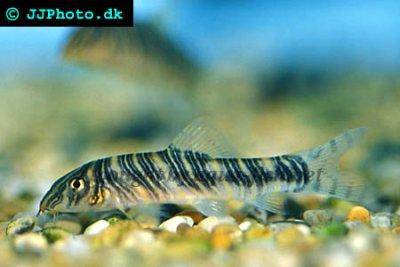




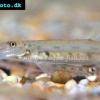 Horseface
Horseface 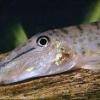 Horseface
Horseface  YoYo
YoYo 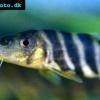 Bengal
Bengal  Burmese
Burmese  Myanmar
Myanmar 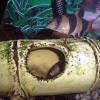 Clown
Clown  Dojo
Dojo 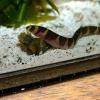 Kuhli
Kuhli  Loach
Loach 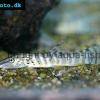 Tiger
Tiger  Tailspot
Tailspot  Blue
Blue